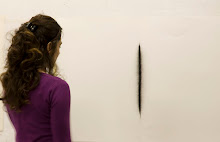I came across this artist while studying for the collage class I am teaching (Surrealism). I found an interesting parallel between my ideas and his, when it comes to the question of the boundary between the inside and the outside, body and space. His collages from the late 40s epitomize the union of internal and external, phantasy and reality.
Karel Teige was born on 13 December (another interesting parallel, I was born on the 14th!) 1900 in Prague. He represented the Chech avant-garde movement and was a photographer, typewriter and graphic artist. He was also a theorist of the arts and architecture.
After joining the surrealist movement in 1934 and until his death from a heart attack in 1951 he created about 400 collages. In these he puts together photographs of female bodies and photographs of landscapes, trees and interiors. This is done in such a way so that the bodily forms seem to emerge from the natural or domestic spaces. The result is an eroticised space, populated by what seem to be enormous statues of female goddesses.
Like this picture below that I particularly like. I can imagine it as a 3-d sculpture.!
Karel Teige was born on 13 December (another interesting parallel, I was born on the 14th!) 1900 in Prague. He represented the Chech avant-garde movement and was a photographer, typewriter and graphic artist. He was also a theorist of the arts and architecture.
After joining the surrealist movement in 1934 and until his death from a heart attack in 1951 he created about 400 collages. In these he puts together photographs of female bodies and photographs of landscapes, trees and interiors. This is done in such a way so that the bodily forms seem to emerge from the natural or domestic spaces. The result is an eroticised space, populated by what seem to be enormous statues of female goddesses.
Like this picture below that I particularly like. I can imagine it as a 3-d sculpture.!
Looking at his pictures on the internet I came across an interesting site that presents his collages in the context of a discussion about the milieu.
There I read that Isaac Newton defined the milieu as the fluid, and as the intermediary between two bodies. Pascal as the median situation, a fluid of suspension, a life environment.
The fluid in this case seems to be the boundary between the body and its space. The milieu is the world that is created in this transgression of boundaries. A world made possible in art. I like this possibility of art practice.
The body emerges from space, like a giant flower or tree. It is not separated from space but merges with it. Is born from it, with it. However, its enormous size prevents it from being contained by space. Its seems that they mutually contain each other. A second aspect of the accepted relationship between body and space is thus changed.
Fluidity is finally down to the very essence of the above form, which is a female torso as well as an inverted penis.
Similarly in the collage above. The woman emerges from the tree, as the tree emerges from the earth, forming a new entity, a woman-tree. The two formerly separate entities are merged into one, preserving their different characteristics while losing their separate identity. Merged in infinite Oneness.
Which brings us to the concept of the subjectile, by Antonin Artaud (still reading the entry in the site above). The subjectile is neither object nor subject, neither inside nor outside, neither above nor below but rather both. The subjectile is between two places. An interval. A double.
Artaud describes how his body is in a state of fusion with objects. Thus objects, acquiring bodily qualities, are also capable of sensations. Seeing the collage below in this context is particularly interested.
This is a woman-house, a kind of building or rather wall since it contains a window. This window creates a space where inside and outside lose their meaning. Since there is no longer an inside, therefore nor an outside.
In this final one, the body is frozen. Like a building would be in cold weather.
The body thus becomes a space to inhabit, to enter.
Looking up 'subjectile' I came across an artist's (Tim Long) Phd thesis on the notion which I am about to read. Thank you internet. http://create.canterbury.ac.uk/11594/1/1364563_T_Long_thesis_no_images_28_9_12.pdf
On the whole, Teige's work seems to me to create a space where one can think about the possibility of a union of phantasy and reality, body and space, nature and the city, Eros and Civilization. It is what Herbert Marcuse refers to when he speaks about 'the truth of the Great Refusal', which is preserved by fantasy. This Great Refusal is the refusal to accept as given the alienation of man from nature, the limitations on freedom and happiness which result from humanity's adherence to reason, and its raison d'etre, the performance principle. In Marcuse's words " In the realm of
phantasy, the unreasonable images of freedom become rational, and the lower depth
of the instinctual gratification assumes a new dignity."( in Eros and Civilization, p.160)
More from Marcuse soon.





